
On July 7th, the Twitter Space event organized by Formless, Superpower, Getaverse and Minghuang Research Institute came to a successful conclusion. This Twitter Space will conduct roundtable live broadcasts on topics such as the breakthrough of Web3 compared to Web2, the essential elements of Web3, how to build user value, and how to develop the ecology of Web3, and discuss what the core elements of Web 3.0 are. Many key answers have also allowed everyone to have a deeper understanding of the core elements of Web 3.0. The following is a review of the wonderful content of this Twitter Space.

1. First of all, let’s get started with some introductions for everyone here tonight, shall we?
Oria: Hello everyone, I’m the CMO of Superpower Squad. Superpower Squad is a superhero-themed casual competitive TPS game based on blockchain technology, including Moba, RPG, Roguelike and social gameplay, with both PVP and PVE elements; the game can be played alone or in teams , you can also form a team to fight to get token rewards. The game is easy to get started, and at the same time has a certain degree of operability and confrontation. High playability and stable economic system. Driven by the community and determined by the community.
Chris: I am Ryan Chris, Co-Founder of this project. I have 5 years of professional working experience in crypto. I’m a specialist in digital marketing and building crypto startups, expert in advanced concepts related to content creation, personalized marketing, sales enablement, lead generation and more.I invested in more than 10 projects and provided marketing and financial consulting services for more than 5 projects.
Brown:I am Yuby Brown, CMO of this project. I am a Defi enthusiast. I will be responsible for the future governance and planning of the ecology, proposal review and voting, and oversight and operation of the treasury allocations.
Getaverse is a blockchain credit system deployed on several public chains. Its establishment aims to create an ecological metaverse service platform based on the Web3 digital authentication engine protocol. In Getaverse, users can improve their income and credit score by participating in activities and holding assets on the platform with their special Decentralized Identity (DID).
Sophia:MING HUANG Research Institute was established in 2019. It has more than 30 Kol community members with high traffic and strong ability, effectively covering 50,000–100,000 users in the active currency circle. Ming huang is committed to building bridges and paving the way between users, project parties and exchanges in the currency circle, and to be a reliable link between users, project parties and exchanges.
2. Let’s talk about the vision and technical foundation of Web3. What do you think the future of web 3 will look like?
Sophia: Web2, represented by traditional Internet companies, has the characteristics of data ownership controlled by a central server, user value attributable to the platform, inconsistent user identity across platforms, and centralized business behavior. On the other hand, Web3 is based on the underlying technologies and infrastructure such as DID and distributed consensus of the blockchain to create a decentralized, open, identity-compatible and trustless data exchange network.
As the future development trend of the Internet, Web3 guarantees user identity rights, data ownership, privacy and security. Web3 is a beautiful vision, but the implementation process is long, which requires a lot of technical support, not only at the bottom layer, but also at the application layer.
Oria: Web3 still has a long way to go. Web2 and Web3 are not only the difference between the interactive mode of reading and writing and the open and sharing economic ecology, but the biggest difference is the control of data — whether it belongs to the platform or is returned to the user. For example, when users of Web3 switch to different social platforms, they do not need to carry data. In my opinion, the development of ecological projects such as GameFi and NFT relies on technical equipment such as VR (Virtual Reality) and AR (Augmented Reality) to provide users with an immersive experience in the metaverse. In recent years, with the explosion of application ecology such as NFT, the trendy community culture of Web3 has become more common, and it respects the value and identity rights of each individual.
Yuby Brown:Getaverse is concerned and committed to the development of DID. DID is an important practice in the development of Web3. The core goals of both DID (Decentralized Identity) and the Web3 paradigm are empowering users by allowing them to control their data, protect their privacy, and ultimately ensure their freedom through an open, censorship-resistant network. Although DID and SSI (Self-Sovereign Identity) differ in presentation and practical application, DID and SSI overlap in most cases.
DID places more emphasis on decentralization, and more emphasis on the point-to-point interaction of each user in the identity system through identifiers. No single or a group of trusted verifier nodes can control the data generated by all processes, so DID focuses more on technology. The implementation method and system architecture, at the same time, DID requires that all aspects of the identity system architecture must be decentralized, including data storage, verification, and transaction on the blockchain or distributed ledgers. The underlying protocols to the upper-layer applications are all decentralized.
DID asserts that everyone has the right to a digital identity they own and control, which securely stores elements of their digital identity and protects privacy. However, it is not easy to implement DID, which involves identity discovery, identification and verification, trusted storage and calculation of related data, identity declaration and credentials, and credit system.
Ben: What are the advantages of the Getaverse system compared to other projects?
Yuby Brown:
1. Getaverse is the first unified identity platform and network based on Soulbound Tokens (SBT). It uses a staking incentive model and combines it with digital identities, creating the concept of a Web 3.0 credit system. As mentioned earlier, it is an anonymous, autonomous, verified (staking) identity model.
2. Getaverse is the first open Decentralized Identity bridge that connects all Web3 application ecosystems. It also provides an underlier system for composite applications and value discovery for Web3 applications (on a global scale).
3. Getaverse is the first system that exists to transform the value of personal data from Web3. It enjoys a promising future and boasts the potential to revolutionize the current blockchain market innovation pattern that deprives individuals of the value of information to increase the value of the individual and the system over time.
4. Getaverse is the first comprehensive service platform dedicated to promoting digital identity ecology and access to Web3 application products around the world.
3. Entering 2022, the wave of the Web3 revolution can be said to be intensifying, with projects such as Web3 social, Web3 games, and Web3 identity emerging one after another, and they often get high attention and dazzling financing performance. However, these projects can be regarded as subdivisions in the Web3 world, and the industry does not seem to have a more official and unified explanation for what Web3 is. So I would like to ask you to talk about it first: what do you think is Web3, and what are the core elements that constitute Web3?
Oria: I think why do people mention Web3? We definitely want to solve some problems of Web2. The most important thing is the problem of user ownership. Users do not get the corresponding value on the platform. For Web3, the most important thing is to redefine the ownership of users. Act with complete autonomy.
I think all this can start with the user’s assets. Everyone can independently control their own assets on the chain through the signature of the public key and the private key, instead of being based on the platform. Secondly, Web3 needs to be built on the premise of no trust, so it also needs open source technology and advanced cryptography technology to achieve.
Yuby Brown : I think the core elements of Web3 mainly include:
The first is decentralization; the second is privacy; the third is an identity that completely belongs to Web3, or an identity in a decentralized society; the fourth may be the distribution of benefits of the DAO organization, including incentive mechanisms, creating A new way of distributing value. Finally, there are some tokens similar to non-homogenization, which are also a symbol of identification. In fact, all the designs of Web3 have always revolved around a core logic, which is the redistribution of rights and interests compared with Web2.
Sophia: Yes, this means that Web3 needs at least three core elements, open source community (transparency rules), user autonomy, and system dividend sharing (incentive contribution). These underlying logics have actually been finalized as early as BM proposed the DAC concept in 2013, and when V God proposed the DAO concept later.
4. An interesting statement is that we are now in the era of Web2.5, that is, the key construction period of the transition from Web2 to Web3. Do you agree with the statement of Web2.5? What do you think is the best entry point for Web3 landing? What is the difference between Web2 and Web3?
Oria: There are some reasons for the emergence of Web2.5, mainly because on the road to Web3, our underlying infrastructure, middle-tier middleware, and distribution platforms are not yet perfect. But on the other hand, the reason why we say that we are currently in the Web2.5 stage is because of the popularity of our application layer, such as Stepn, who was very popular some time ago, the so-called Web3 movement, including more game projects. In short, the application layer comes first, but the infrastructure lags behind.
Judging from the recent investment trends in the market, everyone is more inclined to invest in some high-frequency and low-bandwidth applications. At present, we have seen that many segments are transitioning to Web3. With the improvement of infrastructure, Web3 will flourish and develop. .
Sophia: I mainly share about the best entry point. We can see that the applications on Crypto last year and the year before last were relatively popular, but everyone can clearly feel that they are mainly DeFi or NFT. What are some of these applications? What about the features?
First of all, it is not an application with high bandwidth requirements, and its relative frequency of use will not be very high. Because of the limitations of the underlying facilities, there is no very good technology to support various applications.
Yuby Brown:
Web 2.0 and Web 3.0 are similar technologies with similar backgrounds, but they approach challenges differently. The fundamental distinction is that Web 2.0 focuses on reading and writing content, whereas Web 3.0 focuses on creating content (Semantic Web). The latter is much better, utilizing technology to facilitate information interchange amongst web users while simultaneously enhancing cybersecurity.
While Web2 aims to connect people, Web3 combines this data in meaning along with increasing trust. This happens because of decentralization. More differences are listed below:
Chris:Currency Payments on Web 2 are made in fiat money. Government-issued money, such as the US dollar, is used during transactions. Web3, on the other hand, uses cryptocurrencies such as Ethereum or Bitcoin, which are encrypted digital currencies to fund transactions.
With Web 2.0, the network assumes control for information storage, causing access issues and concerns about the anonymity and protection of online data. Web 3.0 solves this problem by letting data be exchanged in several locations simultaneously.
Web 2 transfers are quicker than Web 3 transfers. Web 2 scans for information kept in a fixed place, generally on a single server, using HTTP in unique web addresses. Web3, on the other hand, assigns ownership to numerous others (decentralization).
The most common Web2 technologies include — AJAX and JavaScript, HTML5, and CSS3. ML, deep learning, semantic web, and decentralized technologies power Web3.
Web2 includes podcasts, social bookmarking, blogs, RSS feeds, and video sites. Web3 incorporates AI and machine learning-powered dApps, virtual worlds, and 3D portals.
5. To empower Web3 users, how do you think an identity rights system and economic model should be built?
Oria: In the Web3 world, users and enterprises will be a closer community of interests. For example, in a distributed DAO organizational system, members participate in organizational operations according to pre-programmed rules, and consensus mechanisms are widely used in decision-making. Web3 enterprises can pay attention to ecological diversity, establish a sound collaboration mechanism, and work with users to expand traffic.
Under the joint participation mechanism of community members, NFT project parties can create their own economic ecology and form an equity incentive system throughout the community and beyond. By participating in the optimization protocol, users can improve community operations and governance, and gain identity, reputation and even token/NFT rewards for themselves. In the future Web3, all user-related data will be fed back to the user in some way, creating greater value.
Sophia: In the future Web3 community, NFT will play a role in connecting and maintaining. Different from the current ordinary forums, the community functions and service purposes of Web3 go far beyond forums. In addition to focusing on community members to build a collective contribution system, it also makes it easier for users to participate in community activities and socialize based on community consensus and the mediating role of NFTs. The needs of user value and identity rights are centrally reflected in the community, and at the same time, they can obtain rewards that can be circulated on the chain.
Yuby Brown : In the future Web3 community, NFTs will play a connecting and sustaining role. Different from the current ordinary forums, the community functions and service purposes of Web3 go far beyond forums. In addition to focusing on community members to build a collective contribution system, it also makes it easier for users to participate in community activities and socialize based on community consensus and the mediating role of NFTs. The needs of user value and identity rights are centrally reflected in the community, and at the same time, they can obtain rewards that can be circulated on the chain.
GETAVERSE DID integrates and creates user on-chain and off-chain data through centralized identity tag SBT and on-chain identity tag SBT and GETAVERSE event credentials. GETAVERSE ID is more like a new human resume in Web3, which can become a link between on-chain behavior and A bridge to the off-chain society.
Chris:GETAVERSE DID supports truly decentralized key management. In the traditional cryptocurrency system, the loss of the private key means that the asset is permanently lost and cannot be recovered. GETAVERSE DID with SBT allows community recovery. Users can curate a group of guardians. These people can be individuals, institutions or other groups. Successful recovery depends on trusting relationships with the majority of people. Unlike traditional social recovery, SBT recovery requires the consent of a qualified majority (random subset). When the user loses the GETAVERSE DID, according to the SBT on the address, the social network of the owner of the address can be found, and then rely on the cross-voting of social network members to restore the community recovery (Community Recovery).
6. To achieve user collaboration and interoperability during the transition period of Web3, how to build a community in the web3 world?
Sophia: The premise for Web3 to go mainstream is that the user experience at least reaches the level of the Web2.0 era. Although the good features brought by decentralization can make up for some shortcomings, front-end interaction design and back-end performance are very important to maintain the user traffic of Web3 infrastructure or application.
Web2.0 gave birth to social tools, UGC, and payment applications; in the Web3.0 era, there are also phenomenal demands for e-commerce and payment of GameFi and SocialFi. Meeting these needs and building a large and strong decentralized ecosystem is one of the tasks of Web3 builders. The project party should link different scenarios, establish a multi-scenario collaboration mechanism, capture the needs of Web3.0 users in a timely manner, and collaborate to generate new applications and achieve ecological prosperity.
Oria: In addition to user education, the way to attract the public to Web3 is to actively adapt to Web2. Currently in the transition stage from Web2 to Web3, the Web2 world is a traditional scene with established rules. As a new thing, Web3 must learn to adapt to its rules, especially in terms of legal compliance. In the future, as Web3 enters a mature stage of development, the judicial system of Web2 needs to be reformed to be compatible with the judicial field of Web3. When it comes to user growth methods, they are attracting Web2 traditional users, and Web3’s traffic acquisition method is similar to Web2. For the GameFi project, its marketing strategy can also adopt the internal test invitation system, free trial or low price to attract users. In addition, simple and convenient user experience is the top priority.
Yuby Brown : The Web3 movement promises a fairer, more equitable approach. Community is the core value of the new iteration of the Internet, it is not about individual interests, but about collective success.
In the Web3 movement, we see the natural culmination of a decades-long movement to decentralize control and give it back to the people. These were the founding principles of the early internet, and what we’re seeing now is an ongoing experimentation in building the consensus model that will govern the future — a shift as profound as we are moving away from feudalism and seeing early democracy succeed.
From a societal perspective, the impact is enormous. Communities can harness the power of technology to connect them with people around the world without the distorted power dynamics that unfairly capitalize on their participation. In the workplace, this could mean a whole new employment dynamic, where employees can manage and control where they work, how often and how much they are paid.
If Web3 promises to fix Web2 and regenerate the internet as a shared resource, then this seems like a good place to start.
Chris:Getaverse provides open API interface functions, so that various innovative applications of Web3 can participate in the co-construction and governance of the Getaverse ecosystem by accessing the API, including but not limited to DEX, NFT, DEFI, Gamefi, Metaverse projects, etc. In Web3, users conduct interactive operations to meet their own needs, and use blockchain technology in the interaction to realize the creation, distribution and circulation of value. The entire process of user interaction and value circulation forms the Web3 ecosystem. Compared with the centralized features of the Web2.0 platform, Web3 is committed to realizing a “decentralized” network ecosystem that is owned by and co-constructed by users.
7. In the past month, the market bear market sentiment has continued to spread, and you are all community leaders who have been deeply involved in the industry for many years. Therefore, I would like to ask you to share: As ordinary users, how should we deploy Web3 in a bear market? How to deliver value to users in the Web3 era?
Oria: This question can be divided into two roles: ordinary users and developers.
For ordinary users, even in a bear market, there will still be a lot of fresh business and innovative products in the market. On the one hand, the financial-related part is risky, and you still have to be sensible and cautious, but you can still try more products and functions that are not related to finance, such as the content section related to the creator economy, etc., using various Web3 new tools, stay curious, and maybe give back.
For developers, the various Web3 technology stacks are constantly iterating and improving, researching various new platforms and technologies, and exploring and experimenting with various technologies. I think decision-making should be goal-driven. If your goal is to change the world, then stick to the track you choose and continue to cultivate deeply; if your goal is to make money, say another thing.
Sophia: I say this because I think Bitcoin is the fundamental of the entire encryption industry, and Ethereum is the fundamental of the entire public chain ecosystem. By understanding this sentence, you can make the right choice at the right time. Of course, there are risks in investing, and everyone must make their own judgments and choose carefully. Only one word, everyone can continue to observe the market to make their own judgments.
I think decision-making should be goal-driven. If your goal is to change the world, then stick to the track you choose and continue to cultivate deeply; if your goal is to make money, say another thing.
If you are a Web3 practitioner, be sure to love your business, your project and your boss from the bottom of your heart, and then invest in BTC and ETH. If you are an investor, be sure to keep a close eye on the Web3 ecosystem, keep up with the active development team, and invest in BTC and ETH. If you are a user, keep an eye on Web3 more closely, all the wool can go, and then invest in BTC and ETH. I say this because I think Bitcoin is the fundamental of the entire crypto industry, and Ethereum is the fundamental of the entire public chain ecosystem. By understanding this sentence, you can make the right choice at the right time.
Of course, there are risks in investing, and everyone must make their own judgments and choose carefully. Only one word, everyone can continue to observe the market to make their own judgments.
Yuby Brown: Web3 promises to redirect economic value to individuals participating in the ecosystem; but in order to do so, it needs a whole new set of rules to support value exchange. A decentralized internet requires a connectivity layer or common standard that would allow value to flow between blockchains, much like HTTP does on the web today.
The current generation of the Internet runs on a centrally managed infrastructure, and Web 3 will be controlled by its users. Decentralized governance is the ultimate utility in creating the next generation of the Internet — where users shape its evolution and share in the value created.
Chris:In Web3, users typically own whatever content they create (such as posts or videos) and the digital objects they buy, rather than a platform that has full control over the underlying data. Additionally, these digital assets are often created according to interoperability standards on public blockchains, rather than being hosted privately on a company’s servers. This makes the asset “portable”, in principle, users can leave any given platform at any time, just unplug from the app and move the data along with their data to another platform.
This is a major shift that could fundamentally change the way digital companies operate: The ability of users to move data from one platform to another creates a new source of competitive pressure and could require companies to update their business strategies. If a platform doesn’t create enough value for its users, they may simply leave. In fact, in Web3, new entrants can clearly incentivize advanced users to switch to them.
The decentralization and interactivity of Web3 creates a brand new Internet model, where users can interact directly without intermediaries. At present, Web3 applications using the three core technologies of blockchain, smart contracts and decentralized oracle networks have realized a wealth of use cases, subverting various industries such as real estate, education, finance, gaming, and medical care, and are bound to become More other industries will be disrupted in the future. And every trusted digital identity member in Getaverse is a supporter of building a Web3 world, contributing and will benefit from it.
8. Do you think Web3 will have a business model that Web2 did not have? Will it have a significant impact on the crypto industry? Where is the future of web3?
Oria: Generally speaking, institutions will pay more attention to the subdivisions, and generally make some layout investment for each subdivision. Once a project comes out, the returns are very considerable. But for ordinary users, many Web3 projects are in very early stages, and they have not even reached the stage of public offering, so it is difficult for ordinary users to access such investment opportunities. As the topic of Web2.5 just said, in fact, 90% of the current projects may not survive Web3.
Sophia: If the questioner is a retail investor, in fact, you don’t need to care about the race track, you only need to care about how you make money in Web3. The simplest one is airdrop; you can also pay attention to the identity authentication project. In addition, there are multi-experience projects, and you can pay attention to the cross-chain aggregation track; under the current market, it may be difficult for SocialFi to run out, but GameFi’s projects can still be played.
Yuby Brown: Web3 applications are here, but it remains to be guessed whether the concept will become mainstream in its current form. Autonomy and decentralization form the core of the vision, but the pressing question is whether governments and regulators will allow them. Lack of oversight and control always creates safety, security and legal issues, which are already a major concern. Another argument against Web3 is that blockchain is known to be a consumer of energy and has a negative impact on climate change, and further adoption of the technology could have a negative impact on the climate.
In the end, each paradigm shift has its own set of challenges that are addressed as it evolves. Some businesses are already adopting Web3 technologies to stay ahead, while many are still exploring opportunities. Visionary business leaders must prepare themselves and their organizations to embrace Web3 when it arrives.
Chris:The Getaverse team believes that with the development of Web3 and Metaverse, the credit system based on DID digital identity will become the most important traffic portal in the future virtual world, which will greatly promote the commercial value of Web3 and Metaverse, and become a real world mapping An important window into the virtual world. Getaverse helps Web3.0 developers apply better products by building a trusted traffic platform based on the DID reputation system for Web3.0 and Metaverse portals, establishes a real identity that allows users to control, emphasizes digital content property rights and ensures that users Decentralized society to gain value.
9. What do you think are the advantages and disadvantages of Web3 so far?
Oria: Web3 and Crypto have promoted the iteration and evolution of many technologies, such as the early discussions on distributed consensus systems, but now more and more people believe that various cryptography technologies led by zero-knowledge proofs will become a technology with more possibilities in the future , we can see the application of zero-knowledge proof technology in blockchain expansion and privacy, and it will be more important in the future.
Sophia: I think tokens are not a necessary option for Web3 protocols or projects, but everyone is now paying more attention to the benefits and governance rights brought by tokens. There are also many ways to extend the difference between Web3 and traditional applications, such as more open protocols, standards, and underlying technology based on cryptography. Also, a lot of people focus on decentralization, but I think the nature of decentralization is more of a problem-solving than a goal.
Yuby Brown: Let me talk about the advantages, the decentralized structure of Web3 is its main advantage or value to users. Centralized networks will not pay off in the next generation of the Internet. A democratic atmosphere where spending is more transparent will be fair and trustworthy thanks to a public distributed ledger. Corporate corruption will thus gradually decrease. To be fair, Web3 has the potential to improve business and government operations. However, because of the scale of the shift, it will almost certainly draw criticism. While decentralization is one of the greatest benefits Web3 can provide, other benefits include:
Web 3.0 will prioritize security and privacy over surveillance and control. Users will have complete control over their data. They can choose to share or keep the information private.
It will also be more secure than previous versions of the internet due to blockchain technology and its autonomous structure. Hackers will find it very difficult to exploit the network, and even if they do, their activities will be recorded. In a decentralized system, hacking is still justified, although most blockchains have developed defenses against this situation.
Multiple apps can access data, every device is linked to the network, and services can be accessed anywhere.
The Semantic Web is the next stage in the evolution of the Internet. Semantic Web enhances the overall experience of a web-based platform. Users can leverage semantic technology to create online data repositories, define vocabularies, and establish data processing rules. Technologies used to enable linked data include RDF, OWL, SKOS, and SPARQL.
Thanks to semantic content, data is closely related to Web 3.0, improving the user experience, reaching new levels of connectivity that leverage all accessible data.
Chris:Web 3.0 will revolutionize the way businesses and consumers interact online, making the customer experience more personal. Users can collectively contribute to product creation, being fairly compensated for their contributions as co-investors and creators, without a central authority authorizing these payments.
It is foreseeable that with the passage of time and the joint efforts of the industry, the technical system will become more and more perfect, and the relevant operation mode will become standardized and reasonable. In the future, there will be more authoritative institutions, industrial institutions, individuals, and Internet of Things With the help of the identity system, we can participate in the vast digital economy world and open up more innovative application scenarios.
The digital society in the future must be user-centric. Entities can create value through self-management of data and trusted sharing and exchange. Distributed digital identities will help the digital society develop healthier, more transparently, and more efficiently. It is believed that Getaverse will become the largest trusted traffic platform based on the DID reputation system in the Web3.0 world in the future, enabling the full ecological application of Web3.0 innovative products.
The above is a review of the Twitter Space brought to you by the Formless platform. Formless will continue to bring high-quality projects to all players. Thank you for your support!






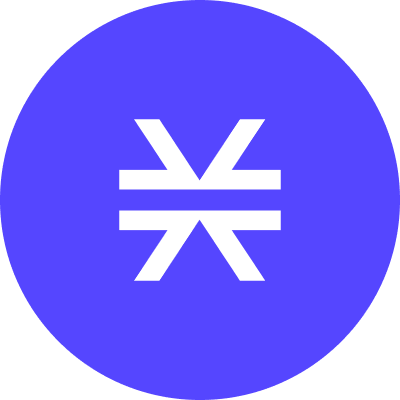








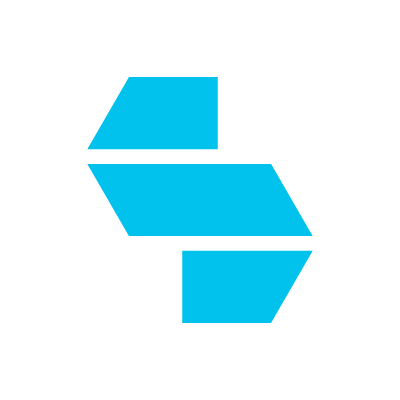





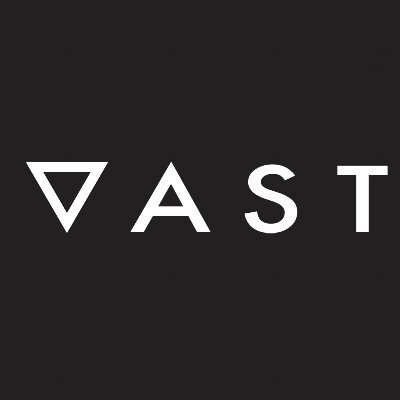







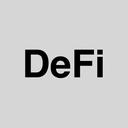













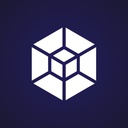



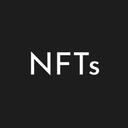







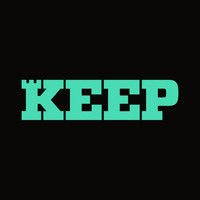




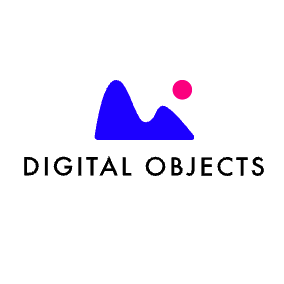






【免责声明】市场有风险,投资需谨慎。本文不构成投资建议,用户应考虑本文中的任何意见、观点或结论是否符合其特定状况。据此投资,责任自负。


